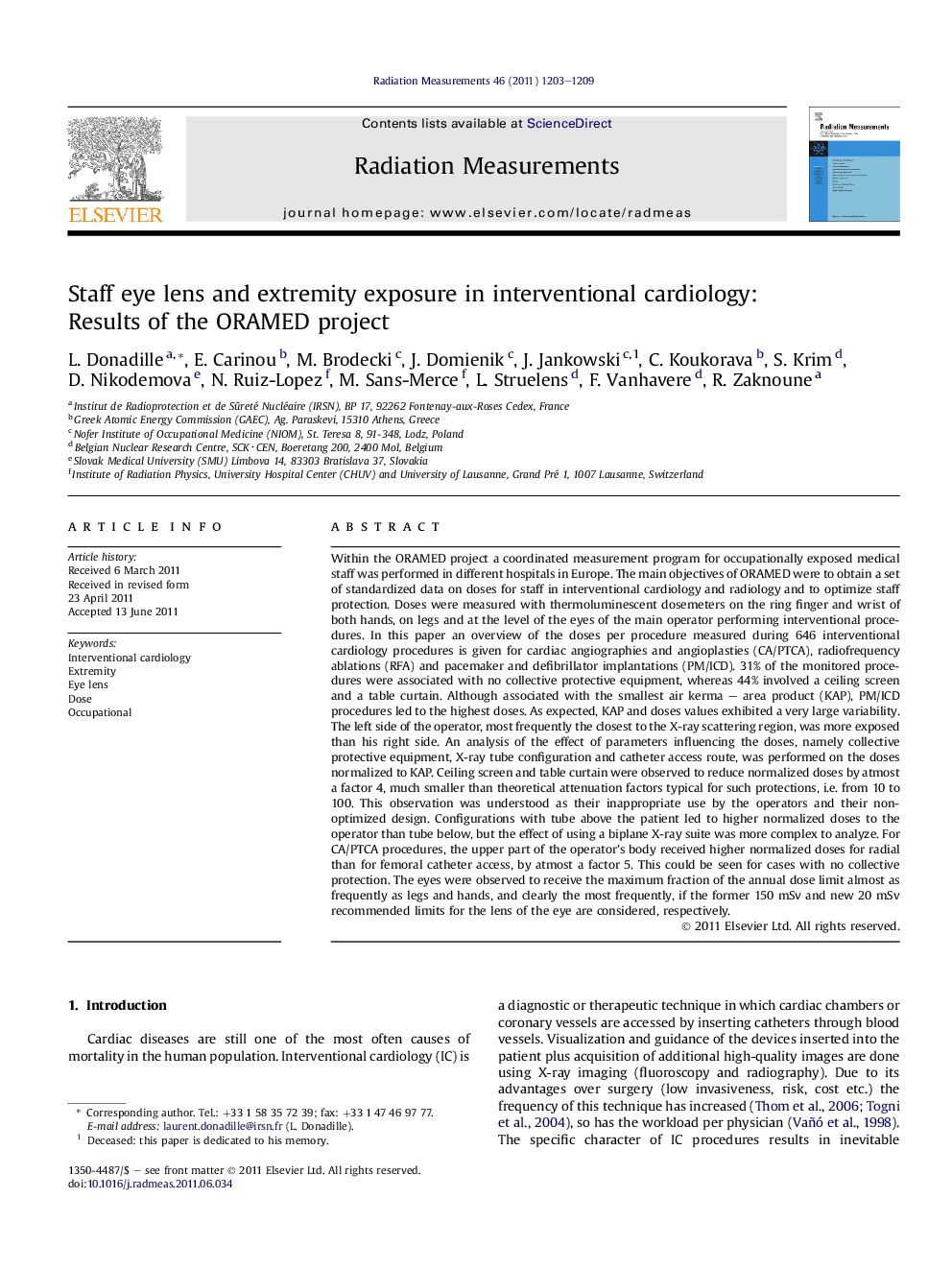| Article ID | Journal | Published Year | Pages | File Type |
|---|---|---|---|---|
| 1881507 | Radiation Measurements | 2011 | 7 Pages |
Within the ORAMED project a coordinated measurement program for occupationally exposed medical staff was performed in different hospitals in Europe. The main objectives of ORAMED were to obtain a set of standardized data on doses for staff in interventional cardiology and radiology and to optimize staff protection. Doses were measured with thermoluminescent dosemeters on the ring finger and wrist of both hands, on legs and at the level of the eyes of the main operator performing interventional procedures. In this paper an overview of the doses per procedure measured during 646 interventional cardiology procedures is given for cardiac angiographies and angioplasties (CA/PTCA), radiofrequency ablations (RFA) and pacemaker and defibrillator implantations (PM/ICD). 31% of the monitored procedures were associated with no collective protective equipment, whereas 44% involved a ceiling screen and a table curtain. Although associated with the smallest air kerma – area product (KAP), PM/ICD procedures led to the highest doses. As expected, KAP and doses values exhibited a very large variability. The left side of the operator, most frequently the closest to the X-ray scattering region, was more exposed than his right side. An analysis of the effect of parameters influencing the doses, namely collective protective equipment, X-ray tube configuration and catheter access route, was performed on the doses normalized to KAP. Ceiling screen and table curtain were observed to reduce normalized doses by atmost a factor 4, much smaller than theoretical attenuation factors typical for such protections, i.e. from 10 to 100. This observation was understood as their inappropriate use by the operators and their non-optimized design. Configurations with tube above the patient led to higher normalized doses to the operator than tube below, but the effect of using a biplane X-ray suite was more complex to analyze. For CA/PTCA procedures, the upper part of the operator’s body received higher normalized doses for radial than for femoral catheter access, by atmost a factor 5. This could be seen for cases with no collective protection. The eyes were observed to receive the maximum fraction of the annual dose limit almost as frequently as legs and hands, and clearly the most frequently, if the former 150 mSv and new 20 mSv recommended limits for the lens of the eye are considered, respectively.
► 643 interventional cardiology procedures were monitored. ► In 31% of the cases no collective protective equipment was used. ► The left side of the operator is generally the most exposed. ► Effect of collective protective equipment, tube configuration and catheter access on doses is studied. ► The eyes receive most frequently the largest fraction of the annual dose limit if the new 20 mSv limit is considered.
